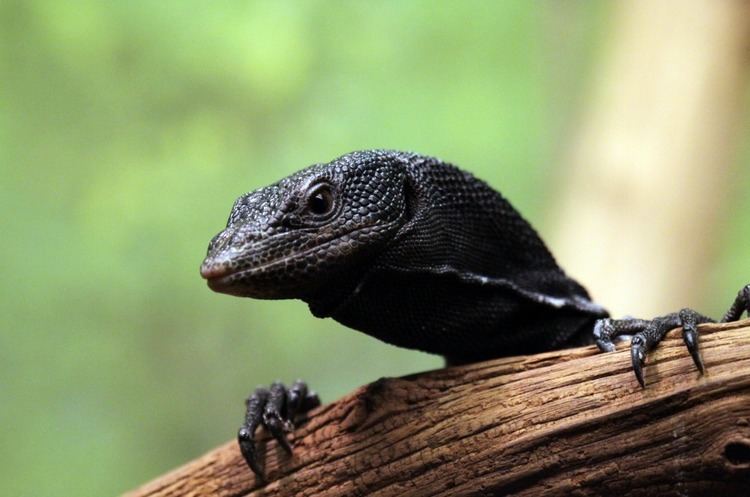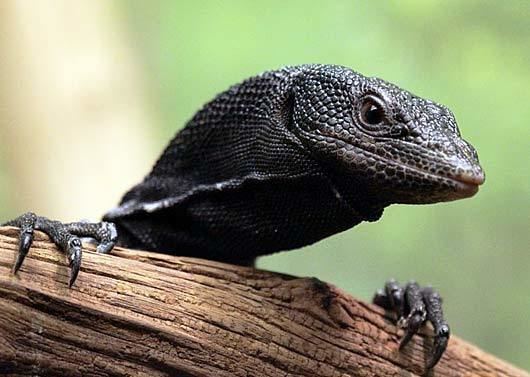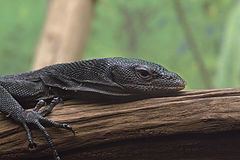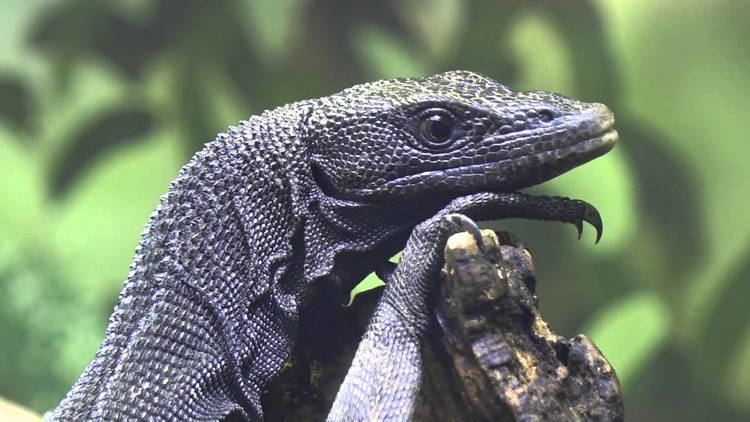Family Varanidae Scientific name Varanus beccarii Rank Species | Phylum Chordata Suborder Lacertilia Genus Varanus Higher classification Monitor lizard | |
 | ||
Similar Monitor lizard, Emerald tree monitor, Reptile, Varanus macraei, Varanus kordensis | ||
Unboxing varanus becarii black tree monitor
The black tree monitor or Beccari's monitor (Varanus beccarii) is a relatively small member of the Varanidae family, growing to about 90–120 cm (35–47 in) in length. They inhabit the Aru Islands off New Guinea, living in an arboreal habitat. Their skin color is completely black, lending them their name.
Contents
- Unboxing varanus becarii black tree monitor
- Black tree monitor
- Taxonomy
- Description
- Predators and prey
- Distribution
- Conservation
- References

Black tree monitor
Taxonomy

V. beccari was first described as Monitor beccari by Doria, in 1874. Years later, it was classified as a subspecies of the emerald tree monitor (V. prasinus), but a 1991 review of the complex returned V. beccari to species status. Arguably, it should be maintained as a subspecies of the emerald tree monitor based on similarities in their hemipeneal structures, but genetic evidence supports their treatment as different species.

The generic name Varanus is derived from the Arabic word waral (ورل), which translates as "monitor" in English. Its specific name, beccarii, is named after the Italian explorer Odoardo Beccari.
Description

Hatchlings and juveniles are a dark grey in colour, with regular rows of bright yellow-green dots which are particularly noticeable on their backs. As they mature, they turn completely black, losing the colourful dots. Fully grown specimens reach 90–120 cm (35–47 in) in length, with the males slightly larger than the females.

The black tree monitor is generally well adapted for living in trees. Its tail is particularly long, sometimes two-thirds of the overall body length, and is used in a prehensile manner to stabilize the animal in the branches. In fact, the tail is used solely for this purpose, as the animal does not evince the defensive tail-lashing behaviour seen in other monitor species. The black tree monitor’s feet sport large claws and adhesive soles, which help it to maintain grip in the trees. It also has unusually long teeth for a monitor of its size, which may help it to hold on to prey it catches in the canopy. Black tree monitors in the wild are reported to be nervous and high-strung; they will flee if threatened, and if handled carelessly, will scratch, bite, and defecate on the offender.
Predators and prey
Black tree monitors are carnivorous, consuming insects, smaller lizards, and small mammals such as shrews. They may also take scorpions, eggs, and nestlings. They are preyed upon by larger lizards and snakes, as well as foxes, which were introduced to the region. They are also hunted by humans.
Distribution
The species is native to the Aru Islands in Indonesia, where it is known locally as waweyaro. It mainly inhabits humid forests and mangrove swamps.
Conservation
V. beccarii is not on the IUCN red list, but it is vulnerable to loss of habitat due to its restricted range. It is also popular in the pet trade, with most specimens being captured from the wild because they need so much room to breed in captivity.
